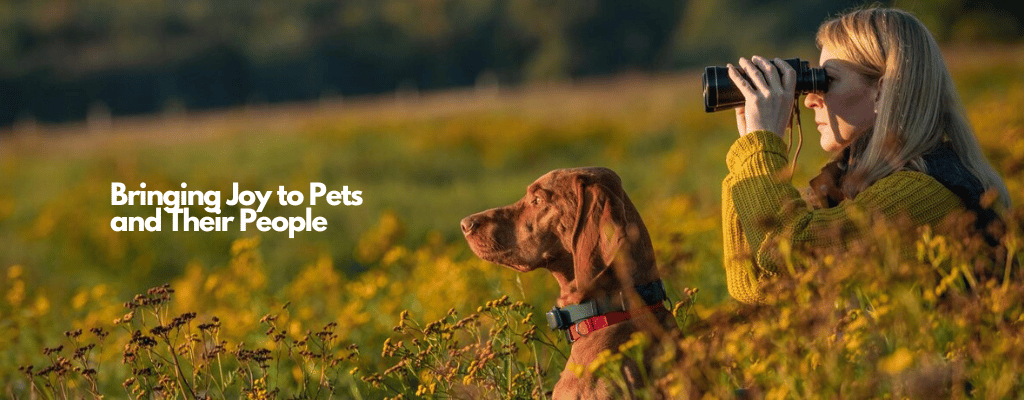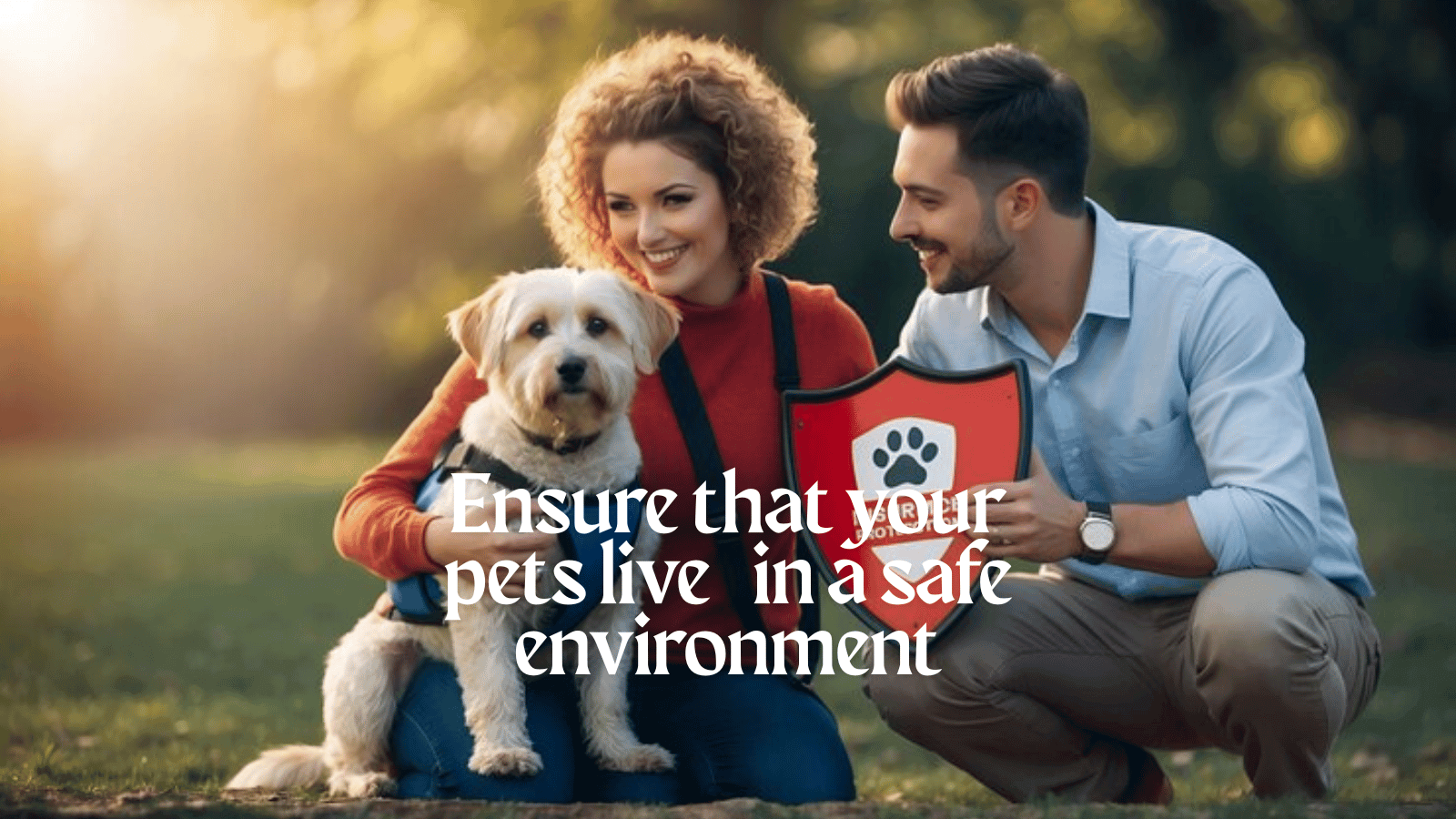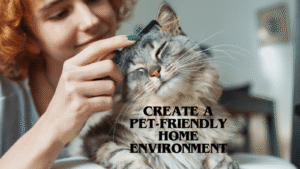If you’ve ever had a little fur baby of your own, you know the importance of “pet safety tips.” There is some risk to pets in each and every home, but with some forethought and the right pet safety guidelines, you can make things safer. In this blog, we are going to cover the pet safety tips that you can implement to keep your pets safe from dangers that you never knew existed inside or outside your home.
Why Pet Safety Tips Are Essential for Your Pet’s Well-Being
“Pet safety Tips” here suggests that your pets live in a safe environment. The well-being of your furry friend is influenced by the home you create. Pet safety tips inform pet owners about how to prevent hazards, which include anything from poisonous plants to unsafe surroundings. More you can save your pet’s life, make him or her healthier and happier, clean up your house, and stop worrying when you follow “pet safety tips”.
1. Top Pet Safety Tips to Create a Pet-Friendly Home Environment
As you start making your home, there’s one important factor many pet parents fail to overlook – pet safety tips. Part of the first phase of “pet protection” is making the environment your pet walks in a place where it can be comfortable, in the sense of not running into deadly obstacles. Begin by putting small things like childproof latches on cabinets, moving poisonous cleaners out of your furry friend’s reach, and making sure that all small objects are a long way from pets.
Pull out pet safety products such as gates to restrict access to certain rooms, and don’t forget to make sure your furniture or decor is not hazardous. Forming a “safe pet environment” could protect pet and avoid injury, It helps the pet to plays happier and healthier life.
2. Pet Safety Tips for New Pet Owners: Getting Started
Whether you’re scrolling through your social media feed and see a cute ball of fur up for adoption or a coworker approaches you with a request to take a pet off of their hands, the taking in a new pet is a life-changing experience.
For new pet owners, “pet safety tips” rank especially high. In their own homes, many pet owners, especially first-timers, unwittingly throw down hazards like they’re going out of style. Pet hazard prevention includes not only keeping dangerous items off limits, but learning how your pet behaves and their natural instincts.
3. Pet Safety Tips: How to Prevent Injuries with Electrical Wires and Sharp Objects
Cover all your electrical outlets and secure any cords or wires that your pet may be tempted to chew on. These are both precautions that can be taken early to prevent accidents later.
An everyday hazards in a lot of homes are electrical cords and sharp items. Pet safety tips surrounding wires and cables are crucial in keeping away from being harmed. Place wires inside cord protectors or ideally out of reach of your pet.
Likewise, avoid storing scissors, knives, and other sharp objects within your toddler’s reach: these should be placed in drawers or high cupboards. By following these pet safety guidelines, you can reduce the likelihood that your pet will accidentally injure themselves with everyday household items.
4. Pet Care Tips: Keep Harmful Foods and Toxic Plants Out of Reach
Another important portion of “pet safety tips” is knowing what foods and plants can hurt your pet. Lots of everyday foods — chocolate, grapes, onions — are poisonous to animals. Some indoor plants are dangerous too, including lilies, aloe vera and ivy.
Just make sure you keep these out of reach of your furry friends, in locked cabinets or on high shelves. If you are trying to establish a safe pet environment, eliminating these potential dangers is a must.
5. Pet Safety Tips for Playtime and Outdoor Activities
Outdoor play and exercise are good for your pet’s body and mental health, but they also are not without risks. No set of pet care tips for outdoor play should fail to mention the necessity of supervision and caution.
“Don’t let your pet run loose, as if you are not vigilant your pet might have an accident or accidentally eat toxic plants or be bitten by other animals.”
If walking your pet is your thing, do it with them on a leash, particularly in traffic-heavy areas. By adhering to the following pet safety tips, you can keep your pet safe while playing in the great outdoors.
6. Pet Safety Guidelines: Babyproofing Your Home for Pets
As you make your home pet-friendly, keep in mind that pet safety guidelines can help you babyproof your space for your four-legged friends. Cats, in particular, love to explore, and it’s a good idea to visually check closets, drawers and cabinets before you shut the doors. Small things such as string, buttons or tiny toys are tempting things for pets to chew or ingest.
Lock up anything which is harmful such as cosmetics, medications and art supplies and simple precautions can protect your child. Interpretation: With these “pet safety tips”, you will see how you can babyproof your home as you get your new pet.
7. Pet Safety Tips: Preventing Pet-Related Fires
Pets are also especially vulnerable to fire. This accounts for approximately 1,000 pet-started fires a year. You can reduce these risks by heeding “pet safety tips.” Don’t leave candles or open flames unattended, and make sure stove knobs are turned off when you’re not in the vicinity.
And why not at least some flameless candles for ambience — no fire hazard involved. If you will be away from home, make sure your pets are in a safe, secure location away from potential fire risks. Pets care tips like these lessens the possibility of a fire break out in your home.
8. Pet Hazard Prevention: Keep Your Pets Safe During Emergencies
Emergencies occur suddenly, and being prepared is crucial to the safety of your pet. Pet hazard prevention during an emergency includes having an emergency kit with all of your pet’s needs, like food, water, medication and up-to-date identification tags.
It’s also vital to have a fire evacuation plan that’s been customized for your pets. Know where your pet is likely to hide and practice evacuating your house with your pet in mind. When it comes to emergencies, one of the best things that you can do for your pet is to keep them safe.
9. Must-Have Pet-Friendly Safety Products for Your Home
It’s always a good idea to invest in the right pet safety products to keep your pets safe. And products such as pet gates, secure crates and pet-friendly cleaning supplies can go a long way toward pet proofing your home.
Also look into environmentally safe choices when it comes to pet safety products. These items tend to be made using green materials and are created to be gentle on the planet, as well as on your furry friends.
10. Pet Safety Tips: Regular Vet Visits for Injury Prevention
And last but not least, one of the best “pet safety tips” is making sure that your pet has regular vet checkups. Regular vet visits can catch potential health problems before they become big issues, and maintain your pet’s overall health.
And veterinarians can offer advice on pet injury prevention and issue vaccines that protect against deadly diseases. Get a vet check-up and keep up with any treatments if you want to keep your pet healthy.
Conclusion
In the end, paying attention to pet safety tips is the secret to keeping your furry friend safe, happy, and healthy. From keeping your home secure to regular veterinary care, a few little steps can have a major impact on your pet’s health. Begin to follow these pet- safety tips today, and let your pet have a safer home! And be sure to share your own “pet care tips” with your pet-owning friends!
Frequently Asked Questions (FAQs)
Why is pet safety important?
It is essential to keep your pet in a safe condition for health and well being of your pet. You can keep your home safe for your pet by following some simple precautions that can prevent accidents, injuries and in some cases, health hazards.
What sort of dangers are there in the house for pets?
No matter whether from electrical wires, sharp objects such as scissors/knives, toxic plants (think: lily or aloe vera), harmful foods (chocolate, grapes, onions), or cleaning supplies. Keep such items out of reach of your pet.
How can I give my home a great pet-friendly design?
When creating a pet-friendly home, the first step is to secure small objects and dangerous substances/baby proof your cabinets, block off dangerous areas with pet gates, as well as make sure that dangerous plants or foods are out of reach.
Are there any pet safety tips for new pet parents?
Yes, new pet owners should be conscious of getting to know their pet’s behavior as well as keeping dangerous items out of reach and the pet in a safe environment. Working with and training their natural instincts can help avoid accidents.
How can I keep my pet safe outdoors?
Supervised outdoor play, a leash for busy public areas, and care of what a dog eats or can get stung by should all be a part of keeping a dog safe. Use a leash to avoid accidents, and keep your pet safe outside.
Which pet-safe safety products do I need to buy?
Pet safety products in the form of pet gates, strong crates, natural cleaning supplies, and eco-friendly pet-proofing materials are a must. They can help avoid accidents and keep your pet safe inside.
What about emergency pet care?
Ensure a pet emergency kit with your pet’s food, water, meds and ID tags. And come up with a fire evacuation plan for your pet as well, as preparation for a potential disaster.
How can I protect my home from pet-related fires?
Never leave candles or open flames unattended, and be sure to turn off stove knobs when you leave the room. For ambiance, consider flameless candles to avoid the risk of fire.
How frequently should I bring my pet to the veterinarian for check-ups?
You also need to take your puppy to the vet for checkups to help avoid accidents, vaccinations and overall health. Your vet most likely has the answer and can spot potential issues before they get serious, along with advice to keep your pet healthy.
How can I protect my animals from poisonous plants and foods?
Know about common toxic foods and plants (chocolate, grapes, onions, lilies) and keep them out of the animal’s reach. Keep them locked away or up on a high shelf, where they’ll be out of reach.






